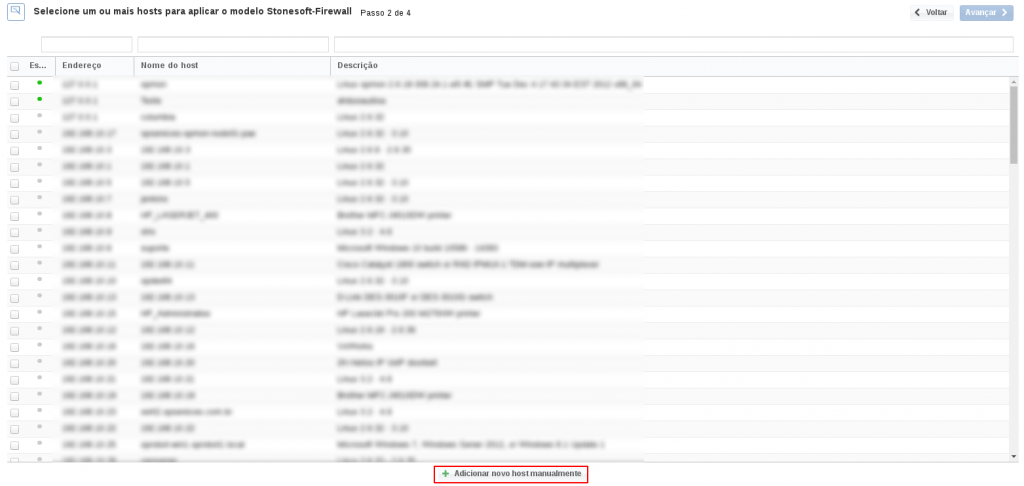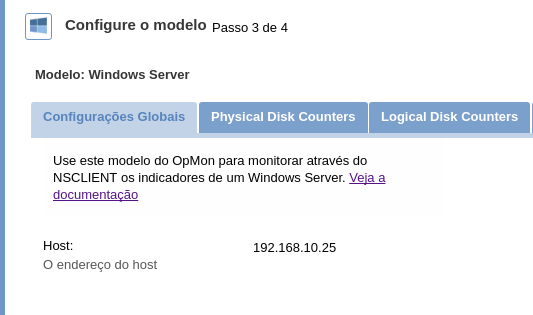Objective
Use this OpMon Model to monitor Microsoft Web Service, through NSClient++.
Target Audience
OpMon admins who wishes to monitor Microsoft Web Service.
Prerequisites
- OpMon 7.0 or higher.
- Have the OpMon installed.
- Have the NSClient++ installed, how to make the installation follow this documentation.
Available Services
- Counters:
-
- Web Service CacheCurrent Files Cached
- Web Service CacheCurrent Metadata Cached
- Web Service CacheCurrent URIs Cached
- Web Service CacheFile Cache Hits %
- Web Service CacheMetadata Cache Hits
- Web Service CacheURI Cache Hits %
- Web Service(_Total)Anonymous Users/sec
- Web Service(_Total)Bytes Received/sec
- Web Service(_Total)Bytes Sent/sec
- Web Service(_Total)Bytes Total/sec
- Web Service(_Total)CGI Requests/sec
- Web Service(_Total)Connection Attempts/sec
- Web Service(_Total)Copy Requests/sec
- Web Service(_Total)Current Anonymous Users
- Web Service(_Total)Current Blocked Async I/O Requests
- Web Service(_Total)Current blocked bandwidth bytes
- Web Service(_Total)Current CAL count for authenticated users
- Web Service(_Total)Current CAL count for SSL connections
- Web Service(_Total)Current CGI Requests
- Web Service(_Total)Current Connections
- Web Service(_Total)Current ISAPI Extension Requests
- Web Service(_Total)Current NonAnonymous Users
- Web Service(_Total)Delete Requests/sec
- Web Service(_Total)Files Received/sec
- Web Service(_Total)Files Sent/sec
- Web Service(_Total)Files/sec
- Web Service(_Total)Get Requests/sec
- Web Service(_Total)Head Requests/sec
- Web Service(_Total)ISAPI Extension Requests/sec
- Web Service(_Total)Lock Requests/sec
- Web Service(_Total)Locked Errors/sec
- Web Service(_Total)Logon Attempts/sec
- Web Service(_Total)Maximum CAL count for authenticated users
- Web Service(_Total)Maximum CAL count for SSL connections
- Web Service(_Total)Maximum CGI Requests
- Web Service(_Total)Maximum Connections
- Web Service(_Total)Maximum ISAPI Extension Requests
- Web Service(_Total)Maximum NonAnonymous Users
- Web Service(_Total)Measured Async I/O Bandwidth Usage
- Web Service(_Total)Mkcol Requests/sec
- Web Service(_Total)Move Requests/sec
- Web Service(_Total)NonAnonymous Users/sec
- Web Service(_Total)Not Found Errors/sec
- Web Service(_Total)Options Requests/sec
- Web Service(_Total)Other Request Methods/sec
- Web Service(_Total)Post Requests/sec
- Web Service(_Total)Propfind Requests/sec
- Web Service(_Total)Proppatch Requests/sec
- Web Service(_Total)Put Requests/sec
- Web Service(_Total)Search Requests/sec
- Web Service(_Total)Service Uptime
- Web Service(_Total)Total Allowed Async I/O Requests
- Web Service(_Total)Total Anonymous Users
- Web Service(_Total)Total Blocked Async I/O Requests
- Web Service(_Total)Total blocked bandwidth bytes
- Web Service(_Total)Total Bytes Received
- Web Service(_Total)Total Bytes Sent
- Web Service(_Total)Total Bytes Transferred
- Web Service(_Total)Total CGI Requests
- Web Service(_Total)Total Connection Attempts (all instances)
- Web Service(_Total)Total Copy Requests
- Web Service(_Total)Total count of failed CAL requests for authenticated users
- Web Service(_Total)Total count of failed CAL requests for SSL connections
- Web Service(_Total)Total Delete Requests
- Web Service(_Total)Total Files Received
- Web Service(_Total)Total Files Sent
- Web Service(_Total)Total Files Transferred
- Web Service(_Total)Total Get Requests
- Web Service(_Total)Total Head Requests
- Web Service(_Total)Total ISAPI Extension Requests
- Web Service(_Total)Total Locked Errors
- Web Service(_Total)Total Logon Attempts
- Web Service(_Total)Total Method Requests
- Web Service(_Total)Total Method Requests/sec
- Web Service(_Total)Total Mkcol Requests
- Web Service(_Total)Total Move Requests
- Web Service(_Total)Total NonAnonymous Users
- Web Service(_Total)Total Not Found Errors
- Web Service(_Total)Total Options Requests
- Web Service(_Total)Total Other Request Methods
- Web Service(_Total)Total Post Requests
- Web Service(_Total)Total Propfind Requests
- Web Service(_Total)Total Proppatch Requests
- Web Service(_Total)Total Put Requests
- Web Service(_Total)Total Rejected Async I/O Requests
- Web Service(_Total)Total Search Requests
- Web Service(_Total)Total Trace Requests
- Web Service(_Total)Total Unlock Requests
- Web Service(_Total)Trace Requests/sec
- Web Service(_Total)Unlock Requests/sec
-
Applying the Monitoring Model
On the hosts or services management area, click on “+” icon to add a new Host, like the image below:

In this area, select the Windows Model Category:

Then click on “Use This Model” on Microsoft Web Service:

This model could be applied on Windows host, or if you wish, you can add a new host just for this monitor. If you wish add a new host, click on: “Add a new host manually”:

In this area insert the relative information about the Host, in this case the Windows host in question and click in “Create a new host”:

In this area, with the host selected click in “Next”:

Then you will see an screen like below, where are informed the Windows information like IP.

To make the service definitions, just navigate through the services using the buttons “Next” and “Back”:

After concludes the definition of services, advance to the revision area of included services. Enjoy to observes which be possible expand the revision area of hosts and services, just click on “+” icon, like below:

As you can see, in this area it is possible to make changes if necessary. When the definitions are make, just click in “Finalize” to conclude the model application process.
Done! The elements are included with success.
